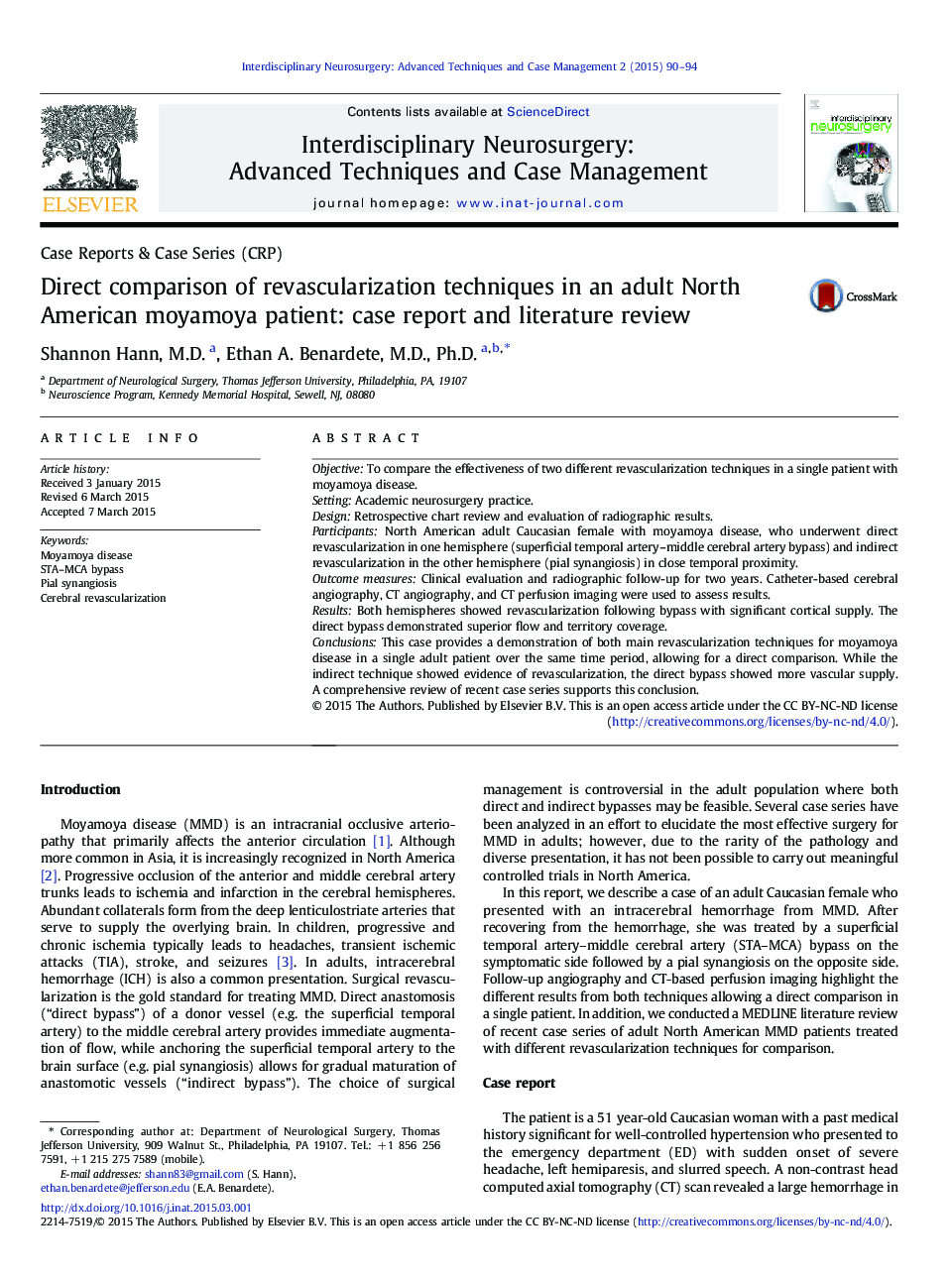| Article ID | Journal | Published Year | Pages | File Type |
|---|---|---|---|---|
| 3057738 | Interdisciplinary Neurosurgery | 2015 | 5 Pages |
•An adult North American patient with moyamoya disease presented with hemorrhage.•Direct bypass was performed on one side and indirect bypass on the other.•Follow-up angiography and CT angiography/perfusion assessed revascularization.•The direct bypass showed superior territory coverage and flow augmentation.•The indirect bypass however also provided an increase in cerebral blood supply.
ObjectiveTo compare the effectiveness of two different revascularization techniques in a single patient with moyamoya disease.SettingAcademic neurosurgery practice.DesignRetrospective chart review and evaluation of radiographic results.ParticipantsNorth American adult Caucasian female with moyamoya disease, who underwent direct revascularization in one hemisphere (superficial temporal artery–middle cerebral artery bypass) and indirect revascularization in the other hemisphere (pial synangiosis) in close temporal proximity.Outcome measuresClinical evaluation and radiographic follow-up for two years. Catheter-based cerebral angiography, CT angiography, and CT perfusion imaging were used to assess results.ResultsBoth hemispheres showed revascularization following bypass with significant cortical supply. The direct bypass demonstrated superior flow and territory coverage.ConclusionsThis case provides a demonstration of both main revascularization techniques for moyamoya disease in a single adult patient over the same time period, allowing for a direct comparison. While the indirect technique showed evidence of revascularization, the direct bypass showed more vascular supply. A comprehensive review of recent case series supports this conclusion.
Graphical AbstractFigure optionsDownload full-size imageDownload as PowerPoint slide
